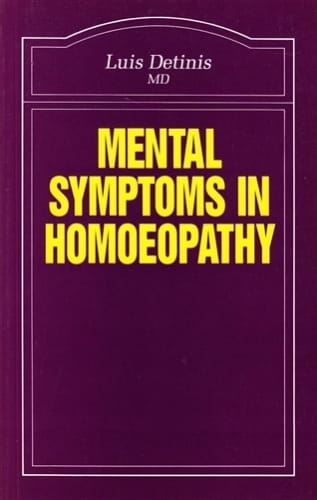The mental symptoms are of special importance in homoeopathic prescribing. They reflect the deepest aspect of the patient who experiences them and the remedies which evoke them; in many cases they take precedence over general and local symptoms, even when these have constituted the original complaint; and when correctly selected and matched, they can lead to a lasting cure.
The first part of this book studies one hundred and ninety-four rubrics relating to mental symptoms, drawn primarily from Kent's Repertory but also from Barthel and Klunker's Synthetic Repertory. The rubrics are given in alphabetical order, nearly always singly but occasionally in small related groups, and are discussed in modern terms, referring wherever appropriate to rubrics of other mental symptoms for contrast or comparison. The discussion is amplified by frequent reference to examples from the author's case-book. Many of the sections end with extracts of materia medica from Allen's Encyclopaedia of Pure Materia Medica, the major source material for Kent's work. The second part consists of the unedited transcripts of six initial consultations taken by the author during clinical classes. Each of the verbatim interviews is followed by questions, discussion, repertorisation and the reasons for choosing the remedy. They are intended to show how a homoeopath may open a case, and how symptoms can come to light during the patient's first account of his or her complaint. The book has comprehensive rubric and remedy indexes.
- Author: Luis Detinis
- ISBN: 9780906584347
- 222 pages
- Paperback
- Published in 1994
- Printed in United Kingdom
Reprinted with the permission of The Society of Homeopaths, from 'The Homeopath' Journal, No. 53, 1994 edition. Reviewed by Christian Taylor.
In this book Luis Detinis sets out to produce a guide to translating the patients words into terms used in Kent's Repertory of Materia Medica 6th edition.
The first half of the book lists 194 (under 151 headings) of the 'most characteristic mental symptoms' appearing in Kent's repertory. Detinis gives a concise definition of each rubric as found in the dictionaries of Kent's time and based on his own experience. Below this he gives 'practical examples' of how the patient may express these symptoms in the interview. He also refers the reader to other related rubrics. Each rubric section ends with extracts of materia medica from TF Allen's Encyclopaedia of Pure Materia Medica, to show the provers expressed these symptoms. The second half contains transcriptions of six of Detinis' own cases, and are intended to show how a sound understanding of mental rubrics can be used effectively in finding the similimum.
The first half of the book is well-researched and provides straight and clear definitions of many of the major rubrics. There are some useful and subtle distinctions between seemingly similar rubrics, for example between 'Impetuous' and 'Impulsive', 'Egotistical' and 'Selfishness', or 'Cursing' and 'Abusive', to name a few. He also tells us which rubrics to combine where, from his readings from the provings, he feels that there is little to differentiate, for example he combines 'Fear of Evil' with 'Fear that something will happen', to be used 'when one is dealing with a patient who has the latter symptom'.
This is all solid stuff though a general lack of imagination shows in the 'Delusion' section, where ten delusions are listed under a heading of 'paranoid structure' and a few other 'common' delusions are given only the briefest discussion. This is rather uninformative when compared with the work Rajan Sankaran has done in illuminating the delusion section of our repertories. Detinis says of the extracts of materia medica that they could 'form the basis of further research'. This does seem to be the case, for in their present format they are of limited use, although they do serve to highlight the presence of small, lesser-known remedies.
The short introduction to the book is almost entirely taken up with quotes from Hahnemann, Kent and Paschero (Detinis worked with, and studied under the latter). These extracts, though appropriate, leave little room for Detinis to share his own insights and experiences that he has surely gained after some twenty years of homoeopathic practice. This sense of modesty runs through his cases in the second half of the book. He holds back on giving a short, in some cases, any, explanation into his choice of one symptom over another for repertorisation informing us that selection 'should be based on the minimum syndrome of maximum value'. He shares little of his knowledge of remedy 'pictures'. At the end of one case he lists his rubrics and gives Calcarea carbonica explaining that 'this is the only remedy which covers all the symptoms'.
The focus of this book is on translating patients' expressions into rubrics. The book is a useful tool in assisting us in this aim. This process is a fairly mechanical, if skilful process. The artistry in homoeopathy is in perceiving which symptoms to translate in order to best describe the patient's state most accurately. That Detinis chooses not to illuminate his own internal process is a shame considering his experience.
All in all though, this is a useful book, especially for those who, like myself, need to feel very sure of a rubric's meaning before being able to use it with confidence. This book should be included on students' book lists.

